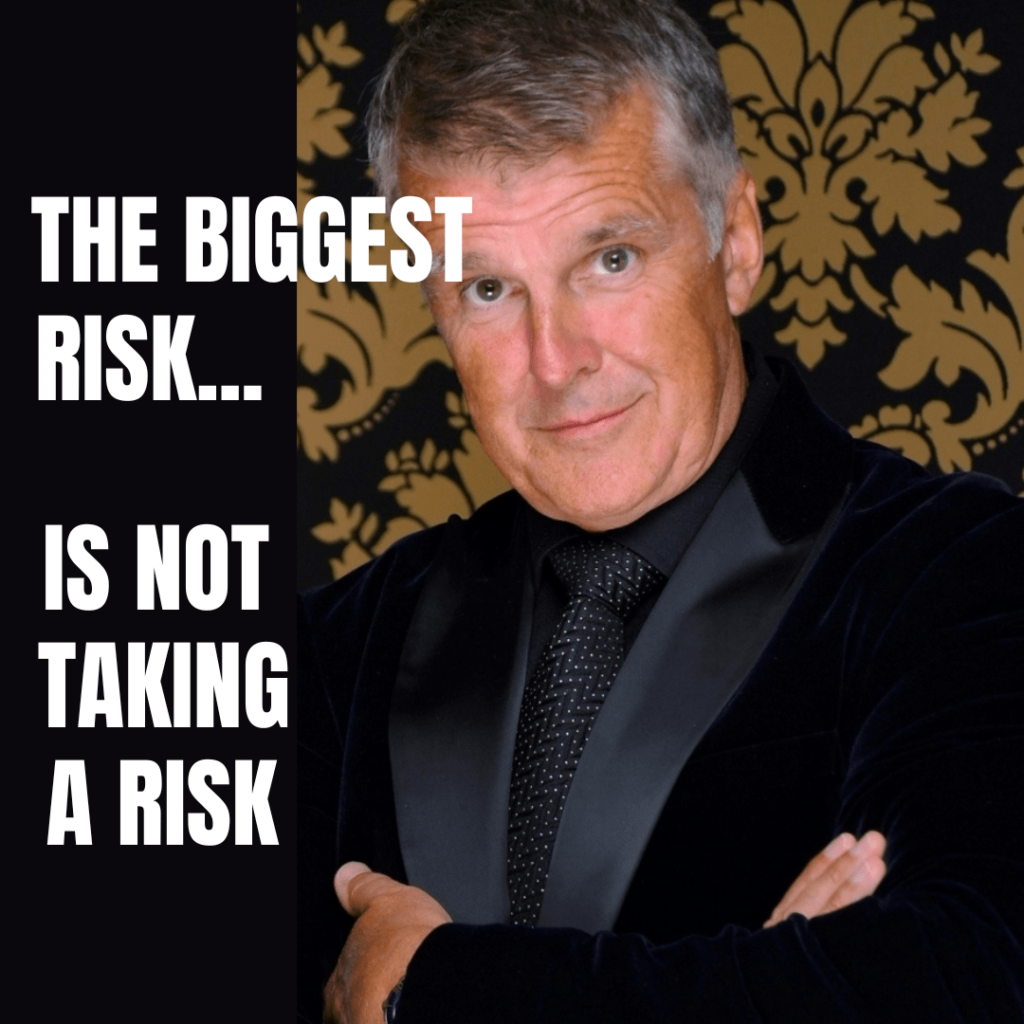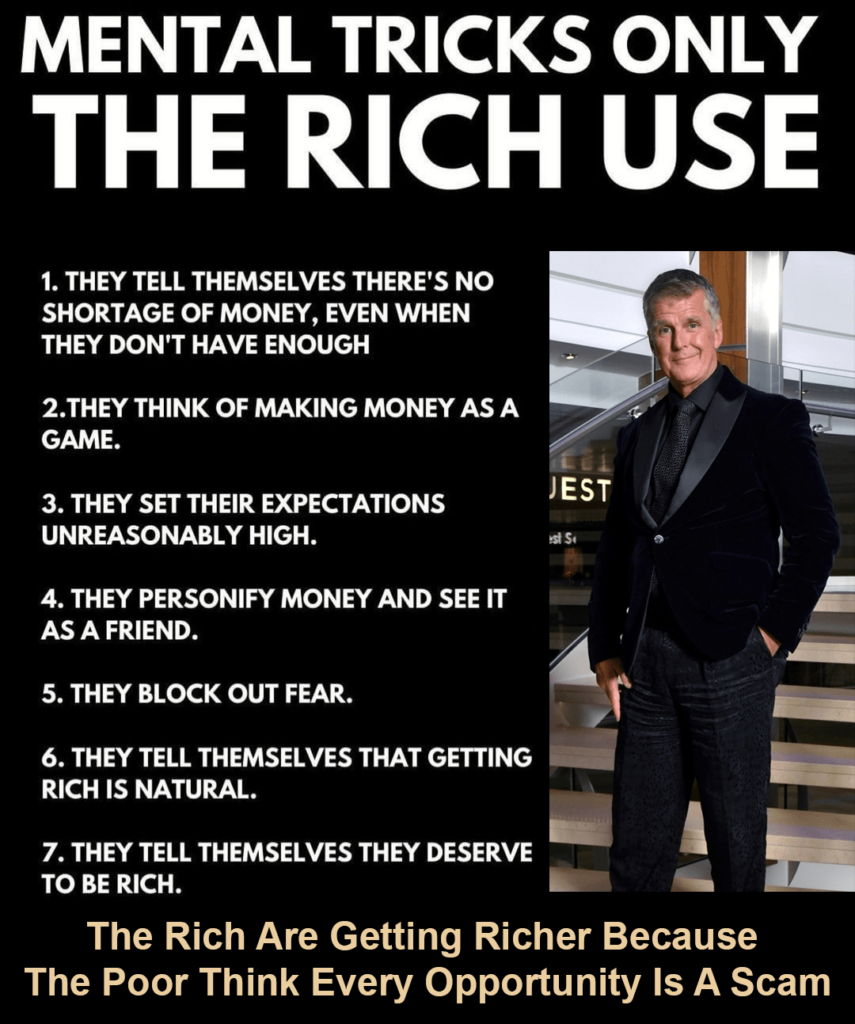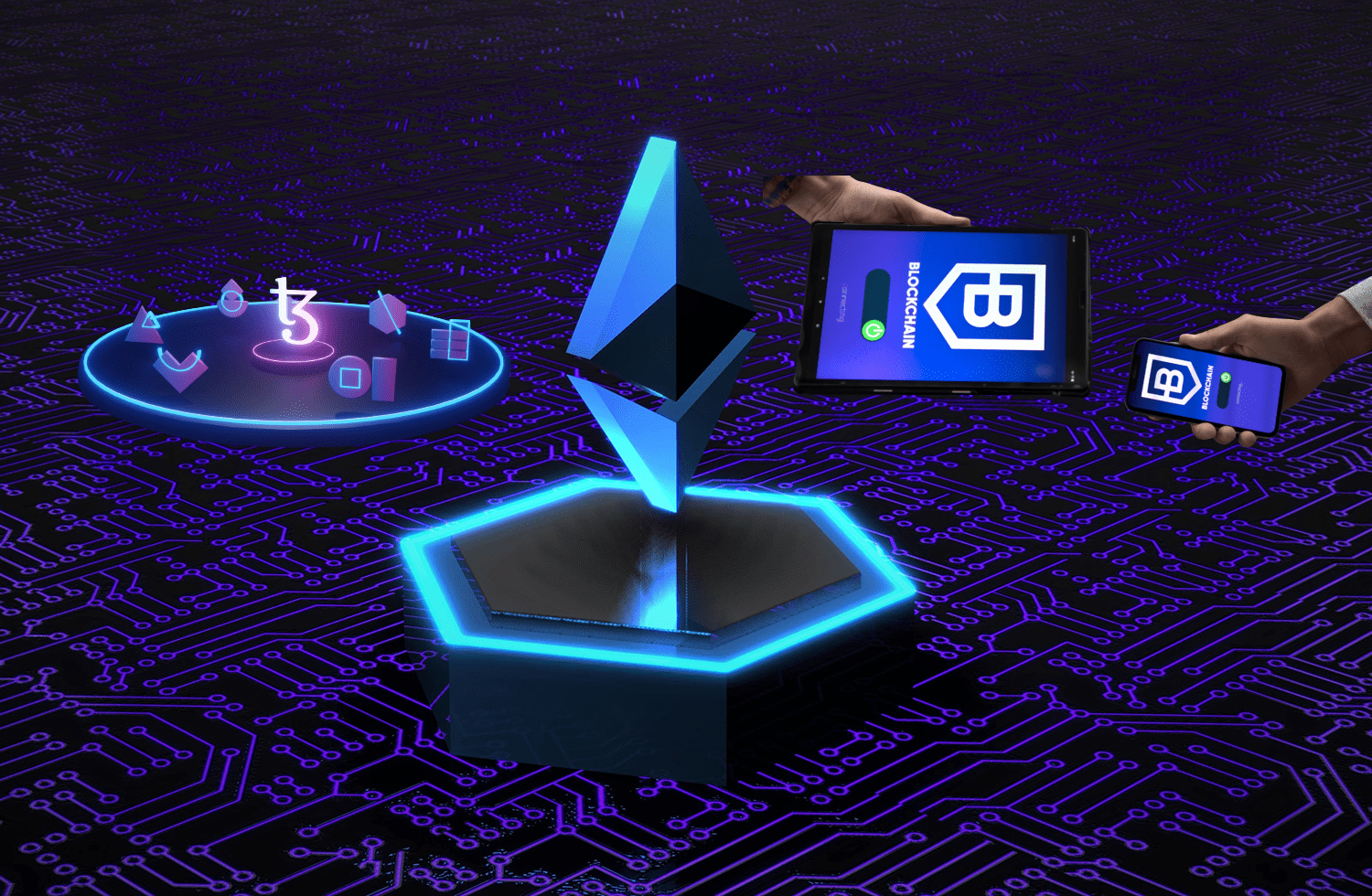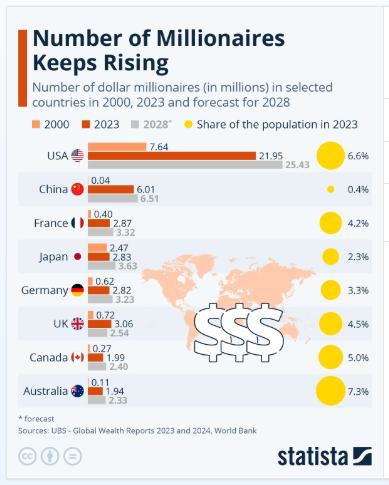Passive and Residual Income Streams have emerged as powerful tools for individuals to secure their financial future and live life on their own terms.
These Income Streams Offer The Promise Of Financial Stability And Freedom
However, they require dedication, strategic planning, and consistent effort to build and maintain. In this article, we will explore what passive and residual income streams are, their benefits, and how to create and manage them effectively.


Understanding Passive And Residual Income:
Passive income refers to earnings that require minimal or no active involvement once they are set up. It is money that flows into your bank account with little ongoing effort on your part. Examples of passive income sources include rental properties, dividends from stocks, royalties from intellectual property, and income generated from automated online businesses.
Residual income, on the other hand, is the recurring income you receive from a single effort or investment made in the past. Unlike passive income, residual income may require some initial work or investment but continues to generate revenue over time. A classic example of residual income is the royalties earned by authors, musicians, or inventors for their creations.
The Benefits Of Passive And Residual Income Streams:
Financial Freedom: Passive and residual income streams provide the financial freedom to pursue your dreams and goals without being tied to a 9-to-5 job. They can cover your living expenses and even allow you to save and invest for the future.
Reduced Stress: Relying solely on a job for income can be stressful, especially during economic downturns or job instability. Passive and residual income sources act as a safety net, providing a cushion during challenging times.
Wealth Accumulation: These income streams can significantly accelerate the process of building wealth. With consistent effort and time, they have the potential to create substantial wealth and assets.
Time Freedom: Passive and residual income streams free up your time, allowing you to focus on other aspects of life, such as spending time with loved ones, pursuing hobbies, or exploring new opportunities.


Creating And Managing Passive And Residual Income Streams:
Real Estate Investments: Owning rental properties can generate passive income through monthly rent payments. You can also benefit from property appreciation over time. However, it requires careful property management and maintenance.
Dividend Stocks: Invest in dividend-paying stocks that provide regular income without the need to sell your shares. Reinvesting dividends can help your investments grow exponentially over time.
Online Businesses: Create online businesses such as e-commerce stores, affiliate marketing websites, or YouTube channels. Monetize them through advertising, affiliate commissions, or product sales.
Intellectual Property: Write a book, compose music, or create software that generates royalties. This can provide a steady stream of residual income as long as your work remains relevant.
Network Marketing: Join a reputable network marketing company that offers products or services you believe in. Building a network of customers and distributors can lead to ongoing commissions.
Rental Income: If you own equipment, such as heavy machinery or storage units, consider renting them out to businesses or individuals in need.
Peer-to-Peer Lending: Invest in peer-to-peer lending platforms that connect borrowers with lenders. You can earn interest on the money you lend.
Join our live Zoom every evening Mon – Fri 8pm sharp. WhatsApp me for details.
Read The Latest Info on Blockchain | Crypto | Metaverse

Blockchain
Unlocking the Potential: How to Make Money from the Blockchain Introduction: The technology behind cryptocurrencies like Bitcoin, has revolutionized the world of finance and beyond. But it’s not just about digital currencies; the blockchain has opened up a world of opportunities for individuals and businesses to make money in various ways. In this article, we will explore some proven strategies and methods to help you harness the power of the blockchain and potentially boost your financial portfolio.
Invest in Cryptocurrencies: One of the most common ways to make money from the blockchain is by investing in cryptocurrencies. While Bitcoin and Ethereum remain the most popular choices, there are thousands of other cryptocurrencies to explore. Here are a few tips for successful cryptocurrency investment:
Understand Risks: Staking and yield farming come with risks. Make sure you understand them before participating.
Blockchain Development If you have programming skills, consider becoming a blockchain developer. There is a high demand for blockchain developers to build decentralized applications (dApps) and smart contracts. You can earn a substantial income by working for blockchain companies or freelancing.

Learn: Start by learning blockchain development languages like Solidity (for Ethereum) and tools like Truffle.
Build a Portfolio: Create your own dApps or contribute to open-source projects to showcase your skills.
Blockchain Education and Consultation The blockchain industry is constantly evolving, and many people and organizations seek guidance on navigating this complex space. You can monetize your expertise by offering blockchain education and consultation services.
Stay Updated: Continuously educate yourself about blockchain technology and industry trends.
Network: Build a network in the blockchain space to connect with potential clients and collaborators.
Blockchain-Enabled Businesses Consider starting a business that leverages blockchain technology. Ideas include launching a cryptocurrency exchange, developing a blockchain-based supply chain solution, or creating a decentralized marketplace.
Market Research: Thoroughly research your chosen industry and its blockchain applications.
Compliance: Be aware of legal and regulatory requirements in your jurisdiction.
NFTs (Non-Fungible Tokens) NFTs have gained significant attention in recent years. You can create, buy, and sell NFTs, which represent ownership of digital assets like art, music, and virtual real estate. Artists and content creators can monetize their work through NFTs.
Quality Matters: If you’re creating NFTs, focus on producing high-quality, unique content.
Market Carefully: Be mindful of the NFT marketplace’s volatility.

Conclusion: The blockchain offers a plethora of opportunities to make money, but it’s essential to approach it with caution and knowledge. Whether you choose to invest in cryptocurrencies, participate in staking and yield farming, become a blockchain developer, offer consultancy services, start a blockchain business, or explore NFTs, thorough research and understanding of the risks are crucial.
The blockchain industry is dynamic and ever-evolving, and it’s important to stay informed and adapt to changes as you navigate this exciting landscape. With the right knowledge, strategy, and perseverance, you can unlock the potential of the blockchain and potentially enhance your financial prospects.
Join our live Zoom every evening Mon – Fri 8pm sharp. WhatsApp me for details.

Crypto Currency
The Genesis Of Cryptocurrency And Profitable Strategies
The world of finance underwent a revolutionary transformation with the advent of cryptocurrency. Emerging in the wake of the 2008 financial crisis, cryptocurrency offered an alternative to traditional banking and financial systems. Since then, it has grown into a global phenomenon, captivating both tech enthusiasts and investors alike. In this article, we will explore the genesis of cryptocurrency and provide insights into how one can potentially make money from this exciting and ever-evolving digital frontier.
The Birth of Cryptocurrency
The concept of cryptocurrency traces back to a whitepaper published in 2008 by an individual or group known as Satoshi Nakamoto. This whitepaper introduced Bitcoin, the first-ever cryptocurrency, as a peer-to-peer electronic cash system. Bitcoin’s underlying technology, blockchain, is a decentralized ledger that records all transactions across a network of computers, making it immutable and secure.
The core principles behind Bitcoin were to create a digital currency that:
Eliminates intermediaries: Bitcoin transactions are direct peer-to-peer transfers, removing the need for traditional financial intermediaries like banks.
Ensures transparency: Every Bitcoin transaction is recorded on the blockchain, visible to anyone, which enhances transparency and trust.
Provides security: The blockchain’s cryptographic techniques make it virtually tamper-proof, safeguarding against fraud and hacking.
Preserves scarcity: Bitcoin has a fixed supply cap of 21 million coins, ensuring it remains deflationary and resistant to inflation.
Making Money with Cryptocurrency
As the cryptocurrency landscape evolved, various opportunities emerged for individuals to profit from this digital revolution. Here are some strategies that have proven to be effective:
Investing: Buying and holding cryptocurrencies like Bitcoin or Ethereum with the expectation that their value will increase over time has been a successful strategy for many. The long-term appreciation of cryptocurrencies has attracted a diverse range of investors, from retail enthusiasts to institutional players.
Trading: Active trading involves buying and selling cryptocurrencies within short timeframes to profit from price fluctuations. Traders employ technical analysis, charts, and market indicators to make informed decisions. However, this approach carries higher risks due to market volatility and requires a deep understanding of trading strategies.
Mining: Mining involves solving complex mathematical puzzles to validate transactions on the blockchain. In return, miners receive newly minted cryptocurrency as a reward. While it was once feasible for individuals to mine Bitcoin with regular computers, it now typically requires specialized hardware due to increased competition and computational complexity.
Staking and Yield Farming: Some cryptocurrencies offer rewards for holding or staking them within specific platforms. Yield farming involves providing liquidity to decentralized exchanges or lending platforms in exchange for interest or fees.
Initial Coin Offerings (ICOs) and Token Sales: In the early days of cryptocurrency, ICOs were a popular way for startups to raise capital. Investors purchased tokens in these projects with the hope that they would appreciate once the project launched.
NFTs (Non-Fungible Tokens): NFTs represent unique digital assets, such as artwork, music, or collectibles, and have gained popularity as a form of digital ownership. Some individuals have made substantial profits by buying and selling NFTs.
DeFi (Decentralized Finance): DeFi platforms offer a wide range of financial services, including lending, borrowing, trading, and yield farming, often with higher interest rates than traditional banks. Participating in the DeFi ecosystem can yield profits through various strategies.
Conclusion
The genesis of cryptocurrency brought about a transformative shift in the financial landscape, providing countless opportunities for individuals to make money and invest in this innovative technology. While the potential for profit is enticing, it’s essential to approach the cryptocurrency market with caution and thorough research. The market’s volatility and regulatory changes can pose risks, making it crucial to stay informed and make informed decisions.
As you navigate the world of cryptocurrency, remember that it’s not just about making money; it’s also about embracing a revolutionary technology that has the potential to reshape the future of finance and beyond. Always invest responsibly and consider consulting with financial experts or conducting thorough research before making any significant financial decisions in the cryptocurrency space.

Metaverse
Unveiling The Metaverse: How It Works And What Lies Ahead
The concept of the Metaverse has captured the imagination of both tech enthusiasts and science fiction aficionados for decades. It’s a virtual realm where people can socialize, work, play, and create, transcending the limitations of the physical world. But how does the Metaverse actually work? In this article, we will explore the underlying mechanics of the Metaverse, its key components, and the potential it holds for the future.
Defining the Metaverse
The term “Metaverse” is a portmanteau of “meta,” meaning beyond, and “universe,” denoting a vast, interconnected realm. Essentially, the Metaverse is a collective virtual shared space that encompasses a multitude of interconnected digital environments. It’s not a single platform but a network of immersive, interconnected virtual spaces where users can interact with each other and digital objects.
Key Components of the Metaverse
Virtual Worlds: At the heart of the Metaverse are virtual worlds. These are expansive, digitally rendered environments where users can navigate, explore, and interact with objects and other users. Examples include virtual cities, fantasy realms, and futuristic landscapes.
Avatars: Avatars are digital representations of users within the Metaverse. They allow individuals to express themselves, personalize their appearances, and engage in social interactions. Avatars can take the form of realistic human representations or fantastical creatures, depending on the platform.
Blockchain Technology: Many Metaverse platforms use blockchain technology to enable secure ownership of digital assets and maintain a ledger of transactions. This ensures that users have true ownership of virtual items, such as land, clothing, and even virtual real estate.
Virtual Reality (VR) and Augmented Reality (AR): While not all Metaverse experiences require VR or AR, they are often used to enhance immersion. VR headsets create fully immersive, 3D environments, while AR overlays digital elements onto the physical world, bridging the gap between the virtual and real.
Decentralized Platforms: The Metaverse often relies on decentralized platforms and protocols to avoid central authority and censorship. Blockchain and decentralized file storage are integral to the Metaverse’s architecture, ensuring users maintain control over their digital assets.
How the Metaverse Works
The Metaverse functions through a combination of advanced technologies and user-driven interactions:
User Interaction: Users access the Metaverse through compatible devices, such as computers, VR headsets, or AR glasses. They create avatars to represent themselves and navigate the virtual environment.
Spatial Computing: The Metaverse employs spatial computing to map users’ physical movements to their avatars’ actions within the virtual space. This allows for natural interaction with digital objects and other users.
Social Interaction: Communication and collaboration are central to the Metaverse. Users can engage in text chat, voice chat, or even realistic facial expressions and gestures to interact with others.
Digital Economy: A thriving digital economy exists within the Metaverse. Users can buy, sell, and trade digital assets like virtual land, clothing, art, and more. Blockchain technology ensures the authenticity and scarcity of these assets.
Content Creation: Users can create and upload their own content to the Metaverse, ranging from virtual fashion designs to virtual concerts. This user-generated content enriches the Metaverse and contributes to its dynamic nature.
Interoperability: Interoperability is a key concept in the Metaverse, allowing users to move seamlessly between different virtual worlds and experiences. This means that your digital possessions and identity can accompany you across different Metaverse platforms.
Challenges and Future Prospects
While the Metaverse holds great promise, it also faces several challenges. Privacy concerns, issues of digital ownership and security, and the potential for monopolies are just a few of the hurdles that need to be addressed.
However, the potential benefits are equally significant. The Metaverse could revolutionize the way we work, socialize, learn, and play. It offers new opportunities for creativity, entrepreneurship, and innovation.
Conclusion
The Metaverse is a dynamic and evolving digital frontier that continues to shape our virtual experiences. As technology advances, we can expect the Metaverse to become more immersive, inclusive, and integral to our daily lives. It represents a new chapter in human interaction with technology, and its development will be watched closely as it transforms the way we perceive and interact with the digital world. The journey into the Metaverse has just begun, and the possibilities are limitless.
Talk to us
Join our live Zoom every evening Mon – Fri 8pm sharp. WhatsApp me for details.
Disclaimer
The information provided on this website is for general informational purposes only and should not be considered as financial advice. The content on this website is provided “as is” and without warranties of any kind, either expressed or implied. While we strive to keep the information accurate and up-to-date, we make no representations or warranties of any kind, express or implied, about the completeness, accuracy, reliability, suitability, or availability concerning the website or the information, products, services, or related graphics contained on the website for any purpose.Any reliance you place on such information is therefore strictly at your own risk. In no event will we be liable for any loss or damage, including without limitation, indirect or consequential loss or damage, or any loss or damage whatsoever arising from loss of data or profits arising out of, or in connection with, the use of this website.
Please consult with a qualified financial advisor, accountant, or legal counsel before making any financial decisions or investments. We are not financial professionals, and the content on this website does not constitute financial, investment, or tax advice. You should conduct your research and seek the advice of professionals in making financial decisions.